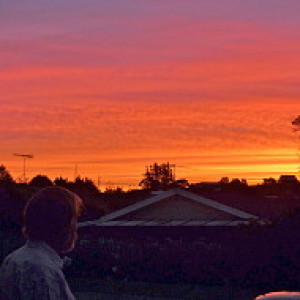A yet to be mighty totara
I am enjoying searching those parts of Auckland where I run to find examples of significant native trees so as to meet this week's challenge. With my foot more or less back to normal, I did the longer run to Maungawhau, in my search for totara and/or kauri.
Within the Maungawhau domain the biggest tress were introduced species, as is the case in every well established inner city park. Plantings were done when "home" meant England to those making the decisions, and (to be fair) to a large percentage of the general pakeha population. That despite that most had been born in New Zealand, or at least arrived at a young age. The views of Maori were not deemed relevant.
I was just leaving a no longer used entry road when I spied this tree, with a fellow beside it. Two totara. Although I did photograph the trees, the lack of detail meant that they really looked like any other two trees. So I am posting this which shows the trunk, indicative of the relative youth of the tree, and the foliage. (As an aside, on the other side of this roadway stood a tall kauri ricker, which was not conducive to a blippable picture.)
Totara (Podocarpus totara) can grow to 30 m over more than 100 years. Totara can live more than 1,000 years, if unmolested. Although most common in the north, it is found in forests throughout New Zealand. It is a hardy tree, and although by nature a forest tree, it will survive as a solitary in the middle of a paddock, as on my father's dairy farm a long time back.
Maori used large totara logs to make their huge waka (canoes) by hollowing out the trunk. The wood from totara was also often used for framing of whare (houses) and for large carvings. Following the influx of Europeans from the mid 19th century, totara was a sought after timber especially for railway sleepers, fence posts, telephone poles, and for general building use.
This picture shows very well the stiff, somewhat sharp ended leaves, and the bark which had medicinal uses for Maori. The leaves made for unpleasant climbing as a boy, even though the branches were usefully spaced to enable clambering lads to get quite high.
More information for interested persons.

Comments
Sign in or get an account to comment.


